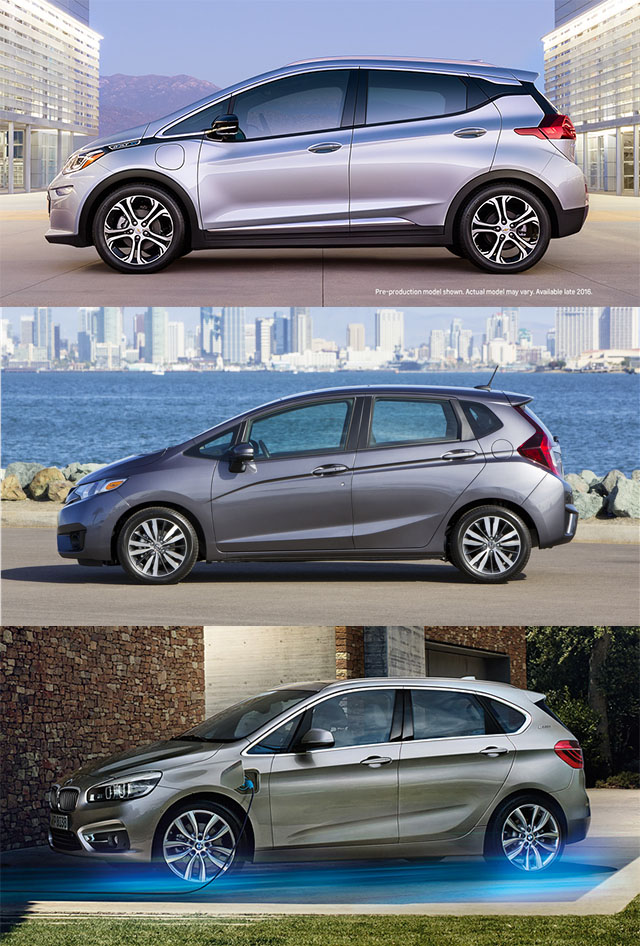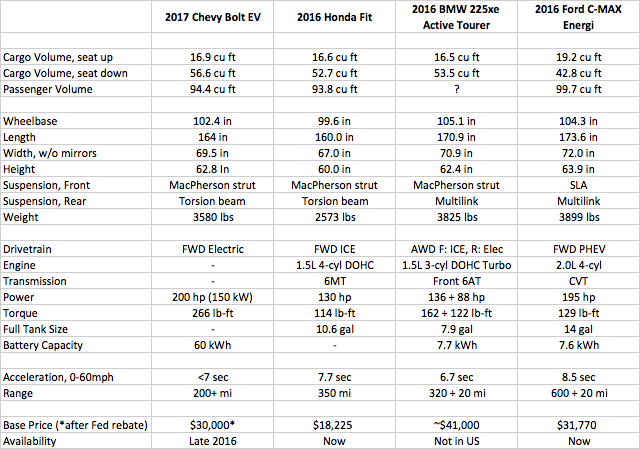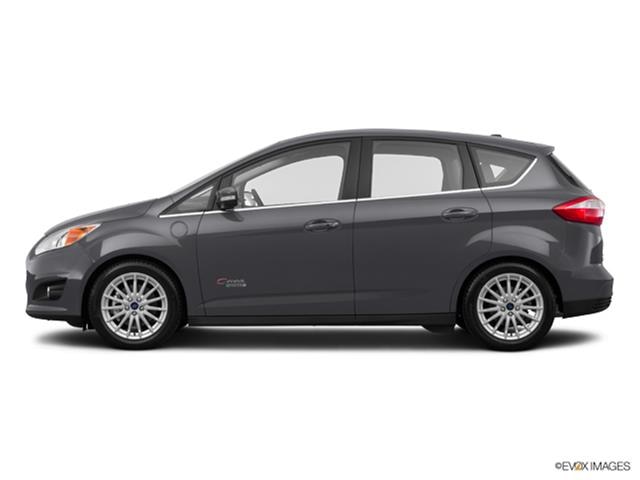The most direct competitor to the Bolt EV is the Tesla Model 3, but we can also look at the body style of the Bolt EV and make some comparisons to similar vehicles. The Bolt EV is a small, tall 5-door wagon. This body style dates back to the late 80's Toyota Tercel Wagon and the Toyota Matrix from the 00's. It's a body style much more prevalent in the rest of the world, as the US consumer has typically gravitated to larger SUVs and more recently CUVs instead of wagons when more space and practicality is needed than a sedan allows. The European classification for this body style is compact multi-purpose vehicle (MPV).
From an engineering and design perspective, there are two vehicles that stick out in my mind as interesting comparisons to the Bolt, assuming we use the small tall wagon as the foundation for comparison: the Honda Fit and the BMW 225xe Active Tourer.
The Honda Fit has been around many years and is widely known for it's efficient interior packaging. It's an inexpensive, practical car that provides a "traditional" car comparison point to the Bolt EV.
The BMW 225xe Active Tourer requires a little more introduction, especially to US buyers. This vehicle will not be available in the US. The ICE version has only been available for just over a year in Europe. BMW will soon be selling the 225xe in Europe. It is a PHEV, with a 3-cylinder engine in front and an electric motor in the rear. The battery is small (7 kWh) and hence the electric range is low (~20 mi). This short electric range is similar to the other PHEVs from European auto manufacturers. What makes the 225xe an interesting comparison to the Bolt EV is its green car credentials and, especially for this comparison, it's body style as a small tall wagon.


So obviously these cars have quite a few differences, notably the luxury and technology content as reflected in the wide price disparity, but their similarities are striking. The 225xe is larger and heavier but the passenger and cargo space is challenged by the complex hybrid powertrain. The Fit is smaller and lighter, but uses the internal space very efficiently.
From an engineering and design perspective, there are two vehicles that stick out in my mind as interesting comparisons to the Bolt, assuming we use the small tall wagon as the foundation for comparison: the Honda Fit and the BMW 225xe Active Tourer.
The Honda Fit has been around many years and is widely known for it's efficient interior packaging. It's an inexpensive, practical car that provides a "traditional" car comparison point to the Bolt EV.
The BMW 225xe Active Tourer requires a little more introduction, especially to US buyers. This vehicle will not be available in the US. The ICE version has only been available for just over a year in Europe. BMW will soon be selling the 225xe in Europe. It is a PHEV, with a 3-cylinder engine in front and an electric motor in the rear. The battery is small (7 kWh) and hence the electric range is low (~20 mi). This short electric range is similar to the other PHEVs from European auto manufacturers. What makes the 225xe an interesting comparison to the Bolt EV is its green car credentials and, especially for this comparison, it's body style as a small tall wagon.


So obviously these cars have quite a few differences, notably the luxury and technology content as reflected in the wide price disparity, but their similarities are striking. The 225xe is larger and heavier but the passenger and cargo space is challenged by the complex hybrid powertrain. The Fit is smaller and lighter, but uses the internal space very efficiently.












